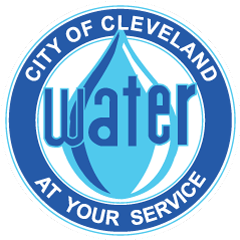Water Quality
We know safe, reliable drinking water is essential to the more than 1.4 million people in the 80 communities we serve. That’s why we're committed to providing our customers with high-quality drinking water each and every day.
Water Quality Report
Informing our customers about water quality is an essential part of our commitment to providing superior customer service. Our annual Water Quality Report, also called a Consumer Confidence Report, details drinking water quality from the past year and includes other helpful information. Features include water quality test results, general health information, frequently asked questions, and an overview of the water treatment process.
Water Quality Regulations
In order to ensure that tap water is safe to drink, the US EPA establishes drinking water standards and regulations for public water systems like Cleveland Water. The US EPA sets legal limits on drinking water contaminants that reflect the level that protects human health and that water systems can achieve using the best available technology. EPA rules also set water testing schedules and methods.
Ohio EPA also sets and enforces its own drinking water standards, as long as they are at least as stringent as EPA's national standards. Ohio EPA implements both state and federal drinking water laws and ensures compliance.
To make sure we’re meeting these standards and regulations, we test our water nearly 200,000 times per year. We continuously monitor more than 20,000 parameters of the water treatment process to ensure each of our four plants is functioning properly. We also collect more than 350 samples each month from across our distribution system to ensure the water remains safe after it has left our plants. In total, Cleveland Water monitors for more than 200 regulated and unregulated contaminants, the significant majority of which are not detected.
Partnership for Safe Water
Our dedication to public health and safety means we hold ourselves to a higher standard than what’s required. Cleveland Water participates in the Partnership for Safe Water. The Partnership is a voluntary effort between six drinking water organizations and more than 250 water utilities to maintain higher water quality standards than those required by law. As part of our participation in the Partnership, we conduct annual performance and operational assessments of all four of our water treatment plants. These assessments are peer-reviewed by a team of utility peers and optimization experts to determine whether the information meets the criteria for advanced certification.
Maintaining Water Quality
We take great pride in delivering safe, high-quality drinking water to your home. Your plumbing plays an important role in maintaining that quality all the way to your tap. Many of the inquiries Cleveland Water receives about water quality issues can be traced back to home plumbing. Here are a few tips to make sure the best quality tap water reaches your glass.
- Always use cold water for drinking, cooking, or making baby formula.
- Flush your water lines after water hasn’t been used for 6 hours or more and after any plumbing work. Do this by turning on the cold water faucet and letting the water run for a few minutes until it feels colder.
- Remove and clean your faucet aerator screens at least twice a year.
- Maintain your water heater by flushing the tank, checking the tank’s temperature and pressure relief valve (TPR valve), and checking the anode rod.
- Check your plumbing for cross-connections and make sure you have a backflow prevention device installed if required.
If a building has been closed or unused for an extended period of time, the water in the building’s plumbing may no longer be safe. When water sits unused or underused in plumbing systems two major issues can occur.
First, stagnant water can harbor pathogens due to a lack of chlorine residuals. Low levels of chlorine, called residuals, remain in the water after treatment to keep it safe as it travels through miles of water mains to our customers. However, once water is no longer circulating in our distribution system, the chlorine residuals slowly dissipate as water sits unused. And when there is no chlorine in the water, bacteria like Legionella have an opportunity to grow.
Second, unused water in both cold and hot water pipes for an extended period of time may also have elevated levels of metals. Stagnant water can result in corroded material from plumbing dissolving into the water sitting in the pipes, resulting in discolored water or a metallic taste.
For most buildings, a simple way to correct this issue is by flushing building plumbing. Flushing should be done before a building is re-opened. Flushing also extends to floors, wings, or sections of buildings that had limited or significantly reduced water use. Reduced water usage is when less than 50% of the normal volume of water is used. We encourage building managers to develop a Water Management Plan for each building served by Cleveland Water following the CDC Guidance Template.
